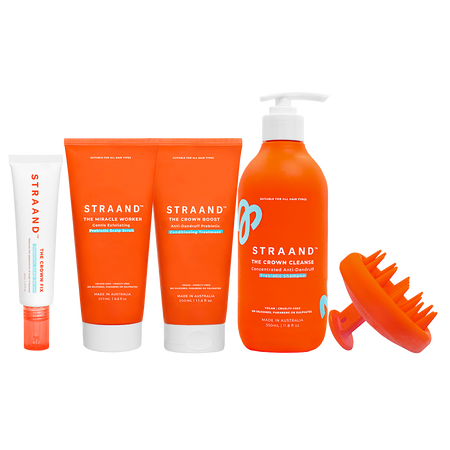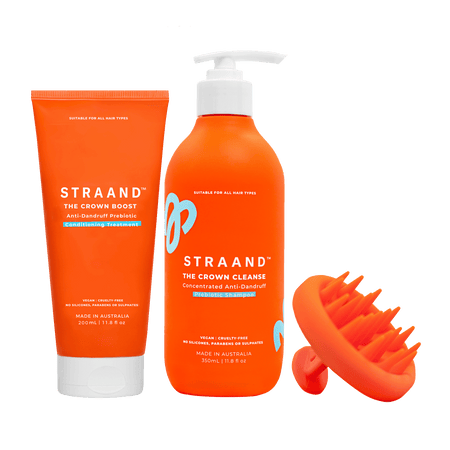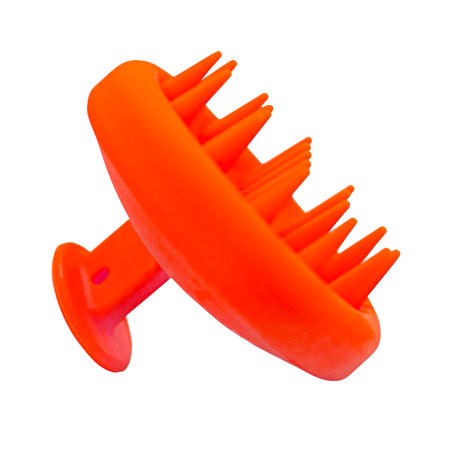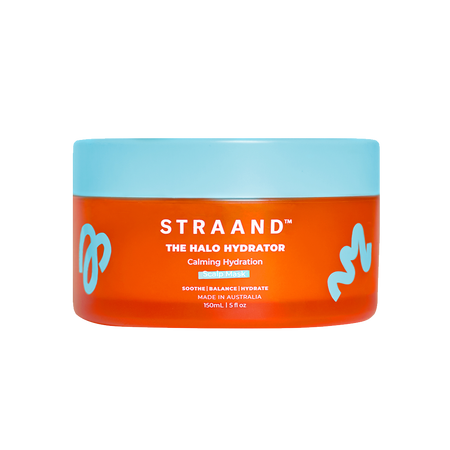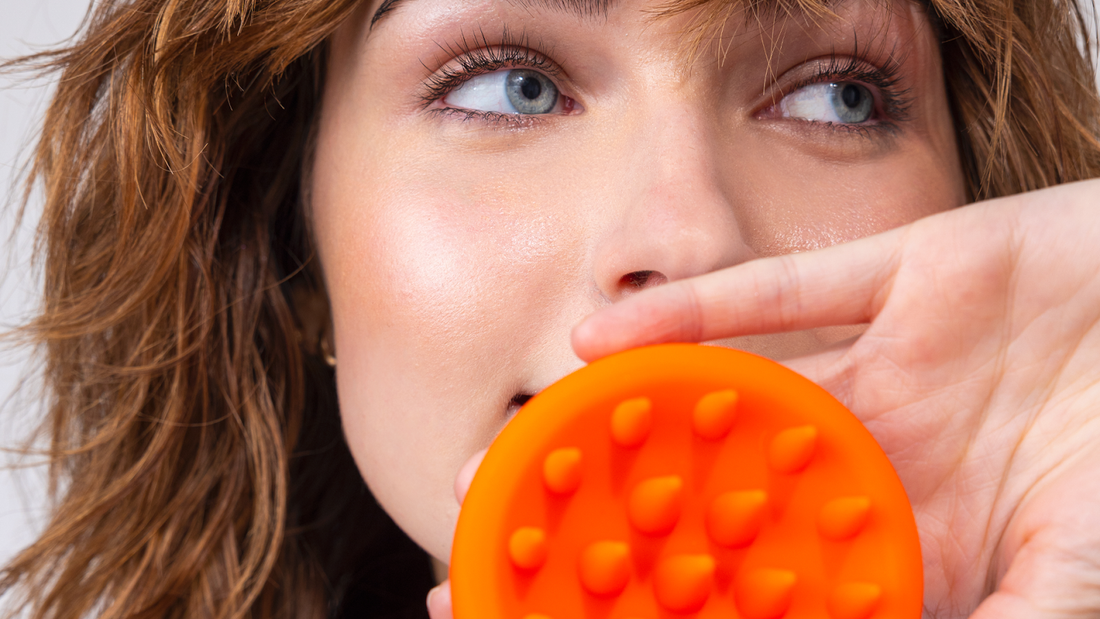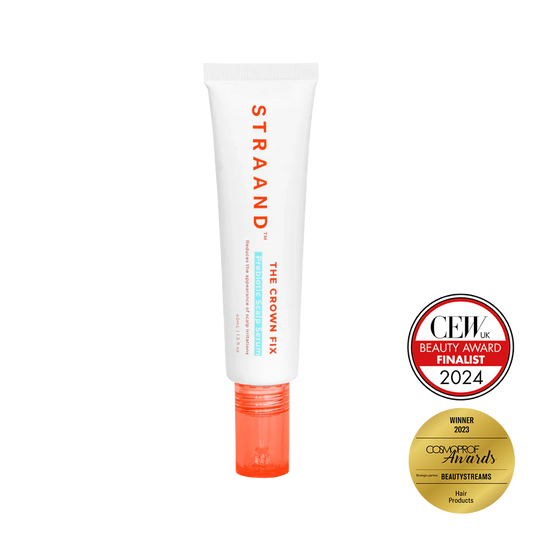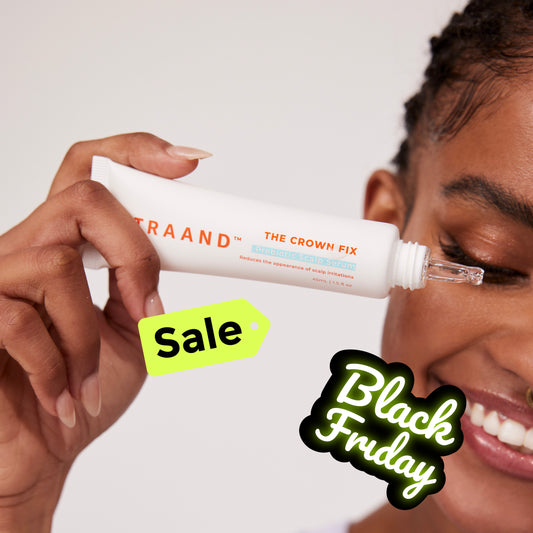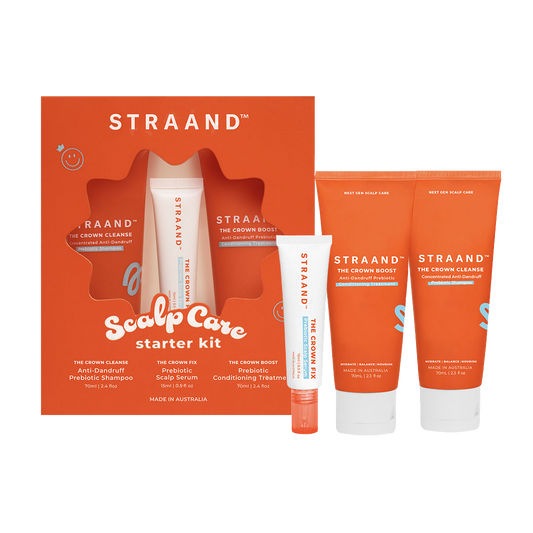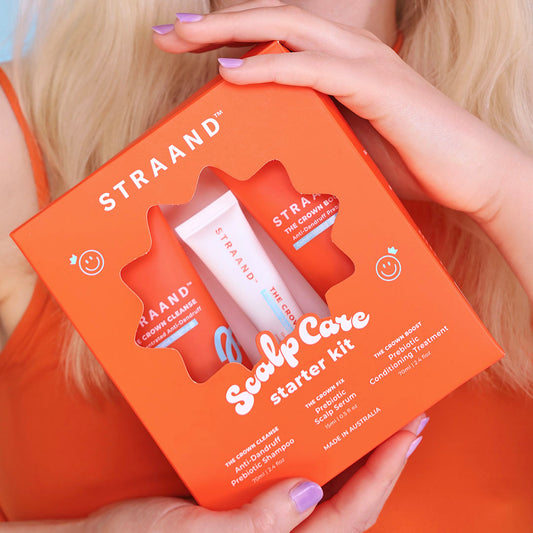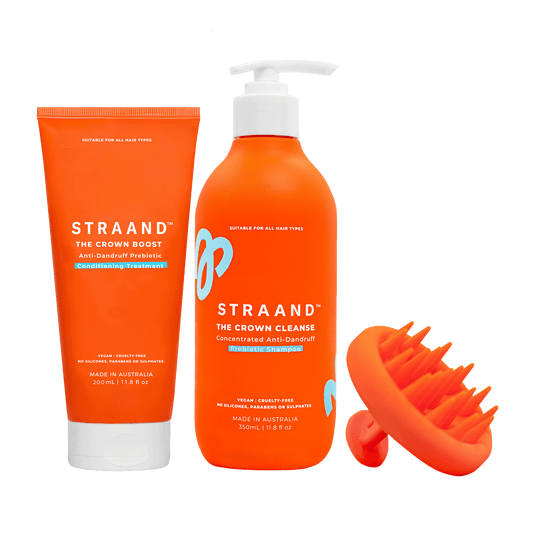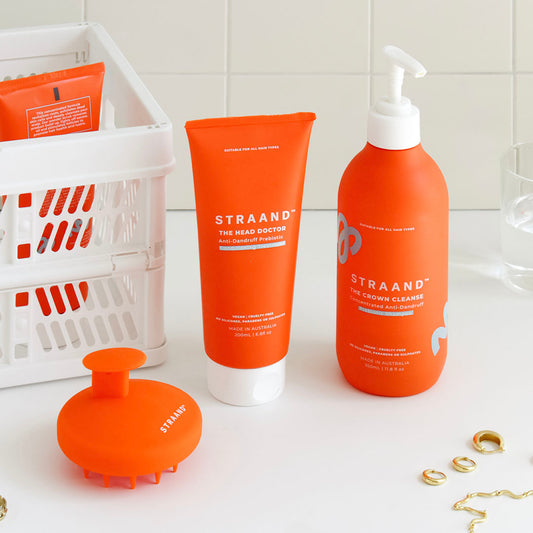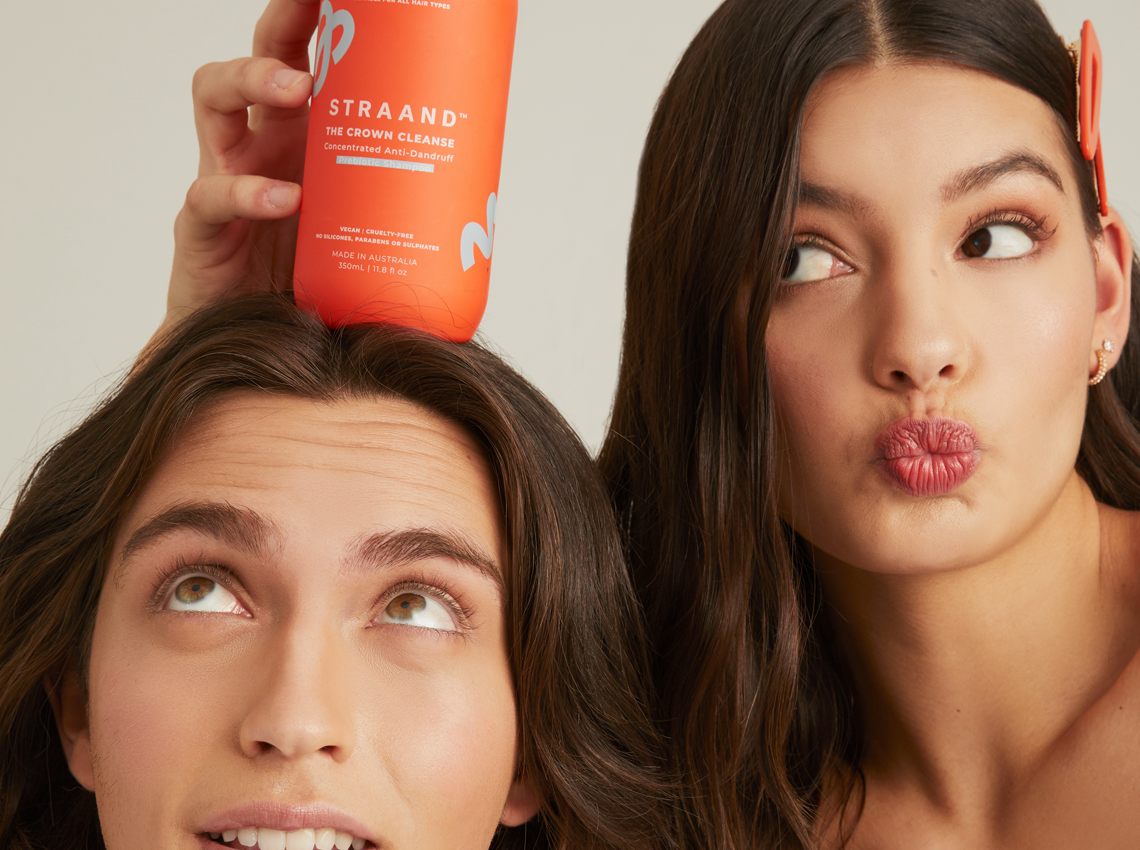There are few things as indulgent and relaxing as the scalp massage you receive at the hairdresser. Most of us can agree that it truly is the best part of the salon experience.
But you don’t have to wait for your quarterly hairdresser appointment to enjoy that tension-releasing, salon-style scalp massage.
The key to achieving the perfect scalp massage at home is a quality scalp brush. It’s the ultimate tool to add to your hair care kit to maximise the health of your scalp and Straands.
So, do scalp brushes work? Yep they do, and in this guide, we unpack how and why.
What is a Scalp Brush?
A scalp brush is a handheld brush that has soft silicone bristles.
Most scalp brushes — including our Exfoliating Scalp Brush — are round in shape, and about the size of your palm.
Scalp brushes also go by a few other names, such as exfoliating brush, massage brush, scalp therapy brush, and scalp scrubbing brush.
A scalp therapy brush actually serves multiple different purposes. It can be used to exfoliate dead skin cells, stimulate blood circulation to the scalp, or apply product to the scalp and hair.
Scalp brushes are not designed to be a substitute for your regular hairbrush. They won’t effectively smooth or detangle your hair from root to ends, but instead they offer an alternative to scrubbing your scalp with your nails.
So, do scalp brushes work in the shower? Yep, they sure do, thanks to the non-slip silicone grip material. They’re actually best used on wet hair, but can be used on dry hair with the right technique.
What Does a Scalp Brush Do?
Scalp therapy brushes can do a range of amazing things for your scalp and hair health.
Let’s take a look at a few key benefits of these unassuming little tools.
-
Boost circulation — Scalp brushes help to promote blood flow to the scalp. This ensures that enough oxygen and essential nutrients are travelling to the hair follicles, which is essential for preventing hair thinning.
-
Scalp exfoliation — These magical brushes remove dead skin and product build up from the scalp, both of which can clog hair follicles. The silicone bristles can target these irritants much more effectively than our fingers or everyday hairbrush.
-
Stress relief — Just like a regular body massage, a scalp massage can be very effective for reducing stress and tension. A gentle scalp scrub can also help to alleviate headaches.
-
Stimulate follicles — Scalp therapy brushes can help to stimulate the hair follicles, which allows the hair to grow stronger, thicker, and healthier. Clogging of the hair follicles can cause hair loss, so using a scalp brush to stimulate and clear the follicles can do wonders for your hair health.
-
Distributes product — A good scalp therapy brush will move product throughout the hair and deep into the scalp. They are especially helpful for people who have very thick hair and struggle to move products through from their scalp to their Straands.
- Rinses products out of hair — Rinsing product out of your hair properly is just as important as applying it. A scalp therapy brush will work the product out of your hair with ease and ensure there’s no buildup left.
Does a Scalp Brush Help with Dandruff?
Do scalp brushes work for dandruff?
Interestingly, dandruff can occur due to an overly dry scalp or an excessively oily scalp. Dandruff can occur for multiple reasons, including skin sensitivities, conditions like dermatitis and eczema, and hormonal fluctuations.
For some people, diet is also a contributing factor. Allergies cause inflammation in the body, which can exacerbate dandruff. Vitamin and mineral deficiencies are also risk factors.
Environmental issues such as pollution, dry air, and humidity are additional common contributors to dandruff. Even stress can worsen itchiness and flakes, which isn’t ideal when you’re already overwhelmed.
A scalp brush can help to relieve the symptoms of dandruff when used in conjunction with a professionally-formulated, dandruff-fighting shampoo like our Crown Cleanse.
Scalp therapy brushes can reduce the symptoms of dandruff in three key ways:

Does Brushing Your Scalp Stimulate Hair Growth?
Yes, adding a scalp brush to your hair care routine can help to stimulate hair growth.
Using a scalp therapy brush stimulates blood flow to the area. This is the reason why using a scalp brush feels amazing, and this effect can also promote hair growth.
Increased blood flow to the scalp improves sebum distribution through the scalp and hair, which is essential for hair health and growth.
Some reports suggest that using a scalp therapy brush can lead to thicker hair, as it stretches the cells of the hair follicles.
As we now know, using a scalp brush also delivers more nutrients to and oxygen to the hair follicle and then distributes this goodness down the lengths of the hair, which can promote growth.
How to Use a Scalp Massager Brush
How you use your scalp therapy brush will depend on whether you’re using it on wet or dry hair.
To use your scalp brush on wet hair, jump into the shower, wet your hair and apply your product.
Then, grab your scalp brush and gently massage the product into your scalp in circular motions. Massage deeply to ensure you’re loosening dry skin cells, too.
Lastly, use the brush to work the product out of your hair as you rinse.
To use on dry hair, use small, circular motions, focusing on the scalp area. Remember, your scalp therapy brush isn’t meant to replace your hairbrush, so don’t try to use it to work through tangles.
Do Scalp Brushes Work?
Yes, scalp brushes do work.
If you’re expecting your scalp therapy brush to detangle knots or glide through the hair, you’re better off choosing a standard hairbrush.However, when used correctly and for their intended purposes — massaging, exfoliating, and applying products — scalp products work beautifully.It’s a safe and effective alternative to scrubbing your scalp with your nails or fingers, as there’s less room for error (and injury). Scalp brushes do work effectively to remove dry skin and create a happy, healthy scalp.How Often Should You Use Your Scalp Brush?
You can use your scalp therapy brush every time you shampoo your hair.
Start by using it a few times a week and see how your scalp feels. If you press too hard too often, you may end up with a tender scalp.
If this is an issue for you, take a break for a few days, and try again with lighter, gentler movements.
You can then gradually increase the frequency of use as it feels suitable for you.

Scalp Therapy Brushes Do Work When Used Correctly
To recap: do scalp brushes work? Yes, and they feel great too.
Scalp brushes do work to exfoliate the scalp, relieve symptoms of dandruff, stimulate blood flow and circulation, promote hair health and growth, and help your products work harder for you.

